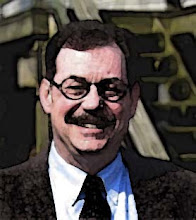Summer Solstice Sunrise - A new start, a new season, a new prayer #solstsice #summer #sunrise
Thursday, July 02, 2015
Saturday, April 05, 2014
Wednesday, April 02, 2014
When I first learned to sail, I often needed
to identify navigation buoys, ships and obstacles that were on the horizon.
Field glasses/binoculars were useless, due to the narrow field of view and
motion of the ship, which is amplified greatly.
What I learned was that the best way to identify objects on the
water was to scan, to keep my eyes shifting. This scanning of the horizon
somehow brings up anomalies, such as a buoy, that simply are not visible when
staring straight ahead. What I catch are discrepancies to the monotonous
horizon. I think that they are first identified through the corner of my
vision, and once generally located, am able to see them with a fixed gaze. I
used this technique for years without realizing it, and always surprising
crewmates who had no idea how I could site objects so far away and indistinct.
The recent crash of the Malaysian airline was covered in the
news, and in one report they cited that the airplane search crews were doing
exactly what I had learned to do, to finding anomalies in the endless monotony
of the vast Indian Ocean.
For me, before the days of GPS, sighting Cormorant Rock off
Mattapoiset was my first definitive visual when crossing Buzzard’s Bay from
Wood’s Hole. It was a dead north track and arrival signaled the completion of
the deep water crossing.
Even with the GPS, I continue to scan the horizon, keeping
visual confirmation of our location, and vessels that may have paths crossing
ours…
Sailing Grounds of
Vineyard Sound, Buzzard's Bay, Cape Cod and the Elizabeth Islands
Wednesday, March 26, 2014
Friday, March 21, 2014
Saturday, March 01, 2014
Thursday, February 27, 2014
Subscribe to:
Posts (Atom)







